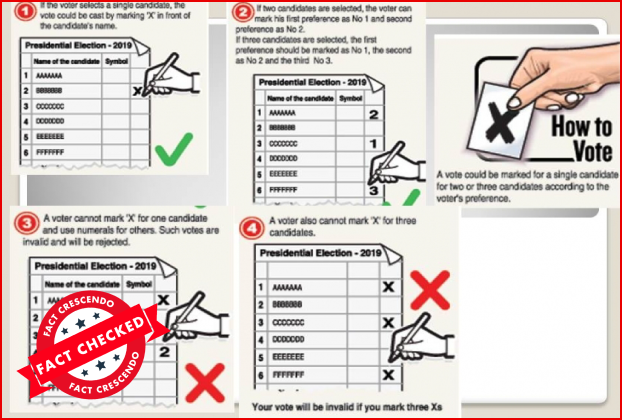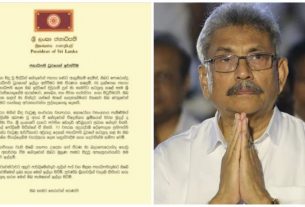The 2024 Presidential Election is becoming a hot topic day by day. It has become the first Presidential Election in which the most significant number of candidates are contesting in the history of Sri Lanka with 39 candidates. Many commentators state that there will be a high competition between several main candidates this time.
Accordingly, many speculate it will be difficult for any of the main candidates to get even half, 50% of the declared valid votes. In such a situation, a candidate who gets more than 50% of the votes will be difficult to select only from the first round of counting votes.
Due to this, to select the winner of the Presidential Election, the second and third preference counting or the ‘second round’ of counting votes has to be followed.
When there are three or four main candidates, the possibility of going for a second round of counting votes increases. It should be noted that this is not a re-poll but a recount of the second and third preferences of those who voted for other candidates, apart from those who voted for the two main candidates.
How to vote in a Presidential Election?
Voters can mark their preference as 1,2, and 3 in front of the symbol of their preferred candidate.
If, in the first round, one candidate is leading the other by a significant percentage of votes, closer to 50%, even if the second preference is counted, that candidate is more likely to win. However, if two candidates obtained similar percentages of votes in the first round (e.g., 38% and 40%), calculating the remaining 22% of voters through their second and third preferences would be decisive.
So, let’s first see how to cast your vote correctly.
If you are voting for only one candidate, you should mark ‘1’ or ‘X’ in front of the candidate’s name and the symbol. And based on your preference, you can also vote for a second and a third candidate. If you are voting only for two candidates, ‘1’ and ‘2’ should be marked in front of the specific candidate’s name and symbol.
If you are voting for three candidates, you should mark ‘1’, ‘2’, and ‘3’ in front of the preferred candidates’ names and symbols.
Only then will your vote be considered valid.
But if your preference is more than one, and if you mark ‘X’ for all three candidates, your vote will be invalid. You can’t mark ‘X’ on the voting sheet more than once. Your vote will be invalid even if you mark ‘X’ for the first preference and then mark ‘2’ and ‘3’ for the second and third preference.
If you mark ‘1’ for the first preference and mark ‘X’ for the second or third preference, your vote will also be invalid.
Also, if you use symbols other than the ‘X’, your vote will be invalid.
How do you count the second preference?
The former Election Commissioner, Mr Mahinda Deshapriya, has explained that if no candidate obtains 50% or more, a second round of counting votes should be considered. This is explained with examples, as mentioned below.
In voting at the Presidential Election, voters can use ‘1’, ‘2’, and ‘3’ according to their order of preference. If voting for only one candidate, the symbol ‘X’ can be used.
Assume that five candidates, A, B, C, D, and E, are contesting, and the total number of valid votes is 100. Then, suppose that the number of votes obtained by each candidate is as follows. A = 40, B = 35, C = 15, D = 6, E = 4. Thus, after the calculation of the first round, the competition in the second round is only between A and B, who placed first and second in the first round, respectively. The remaining three candidates, C, D, and E, have been eliminated from the competition.
In the second round, the other preferences voted in the A and B voting papers, which obtained the first and second positions, are not considered. All the voting sheets of C, who received 15 votes, are considered. If there are voting sheets only with the vote for C, those papers would be set aside. They do so because those voters have not expressed their preference to anyone else.
If the first preference is marked for C and the second preference is for A or B, the voting sheets with the second preference for A are placed in the box reserved for A, and those marked for B shall be placed in the box reserved for B. (it is not necessary to consider the third preference in those voting sheets)
If the first preference is marked for C, the second preference is marked for D or E, and the third preference is not marked, those voting sheets are set aside. But even if the second preference is for D or E and the third preference is marked for A or B, those sheets are placed in the boxes reserved for A and B.
When the second preference is marked for D, and the third preference is marked for E, they are set aside as E is eliminated from the competition. If the second preference is marked for E and the third preference is marked for D, they are also set aside. If the second and third preferences are not for either A or B, those voting sheets are set aside.
According to this method, the voting sheets in which D or E received the second or third preference are set aside, and if the second or third preference is received by A or B, it is added to their respective counts. This calculation allocates the number of votes marked as second or third preference for the two candidates who got positions one and two in the first round.
Through the second round, assume that A gets three extra votes and B gets ten votes. Then, A’s total number of votes will be 43 ( 40 + 3), and B’s total number of votes will be 45 (35 + 10). The number of valid votes is 88 (43 + 45). B wins the election as B gets more than half of the valid votes (88/2 = 44).
There is no need to consider the total number of valid votes as 100 and get more than 50.
A wins the election if A gets eight extra votes (48) and B gets five (40).
If neither A nor B receives extra votes (A = 40, B = 35), A wins the election.
Even after the second round of counting, if A and B get an equal number of votes, the Election Commission will add a vote to one person by drawing lots to select the winner.






